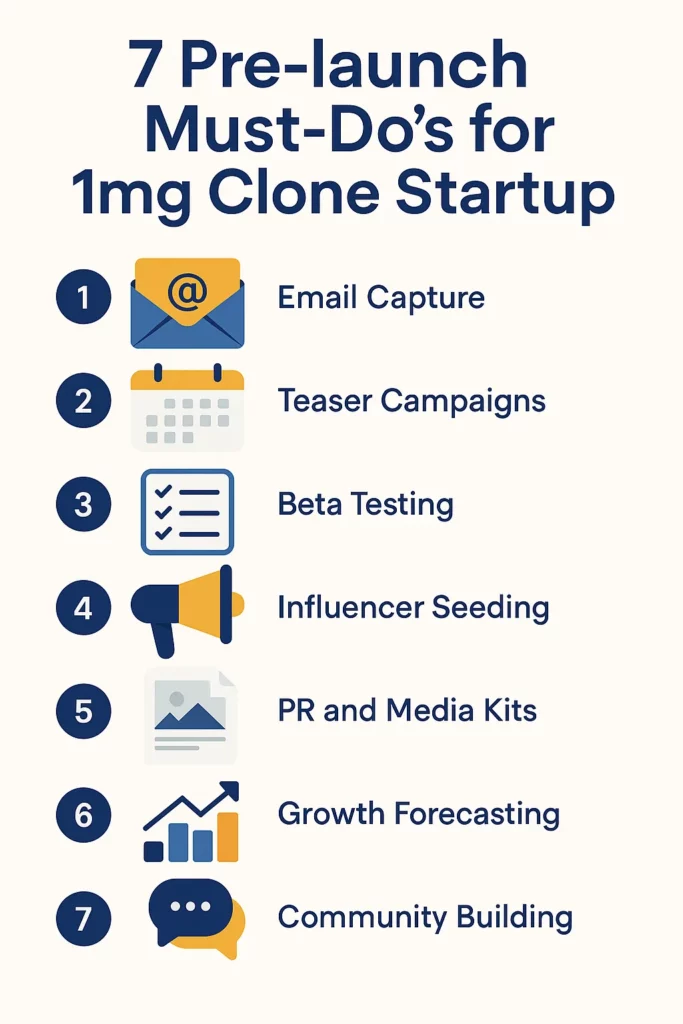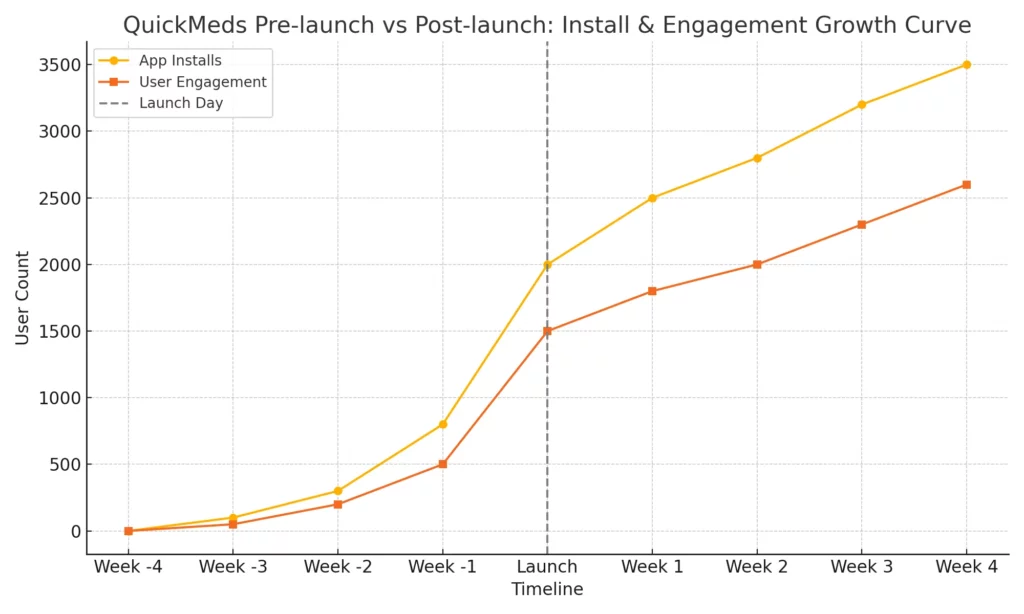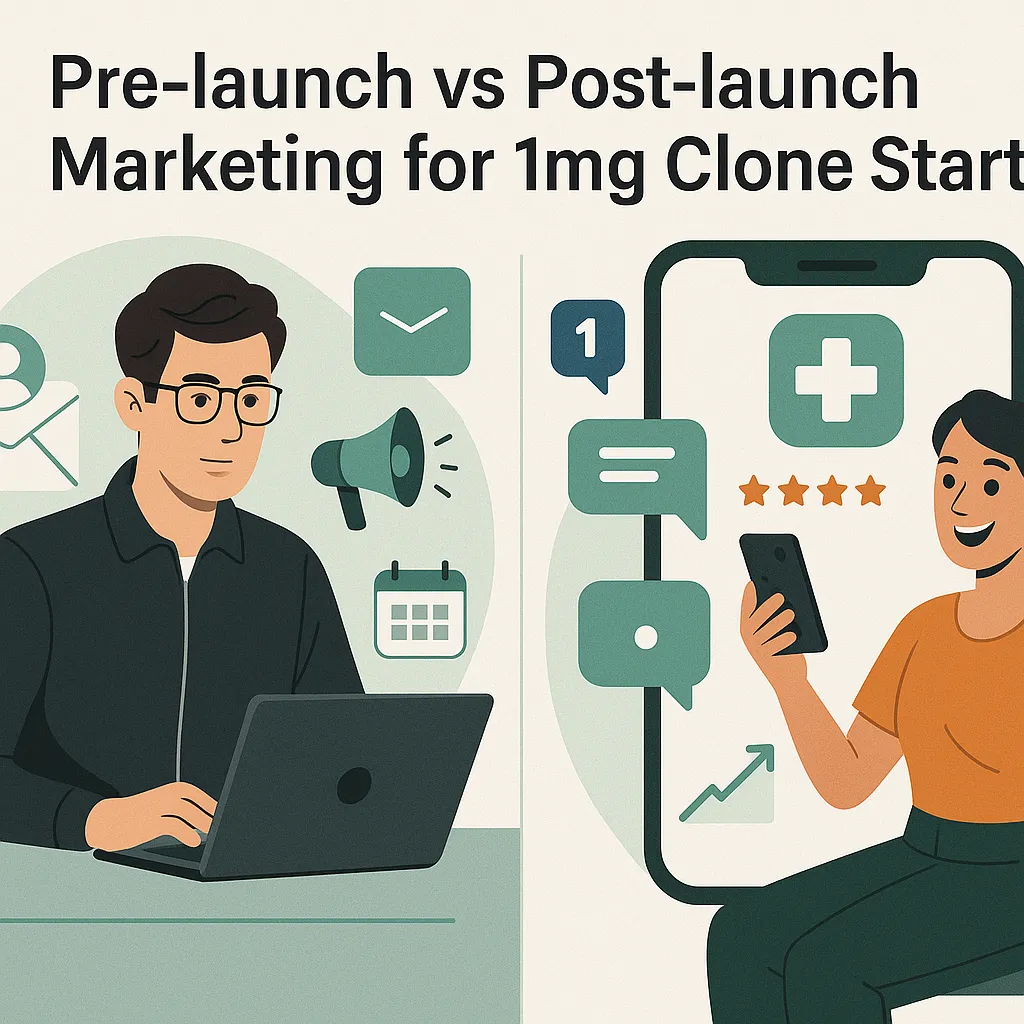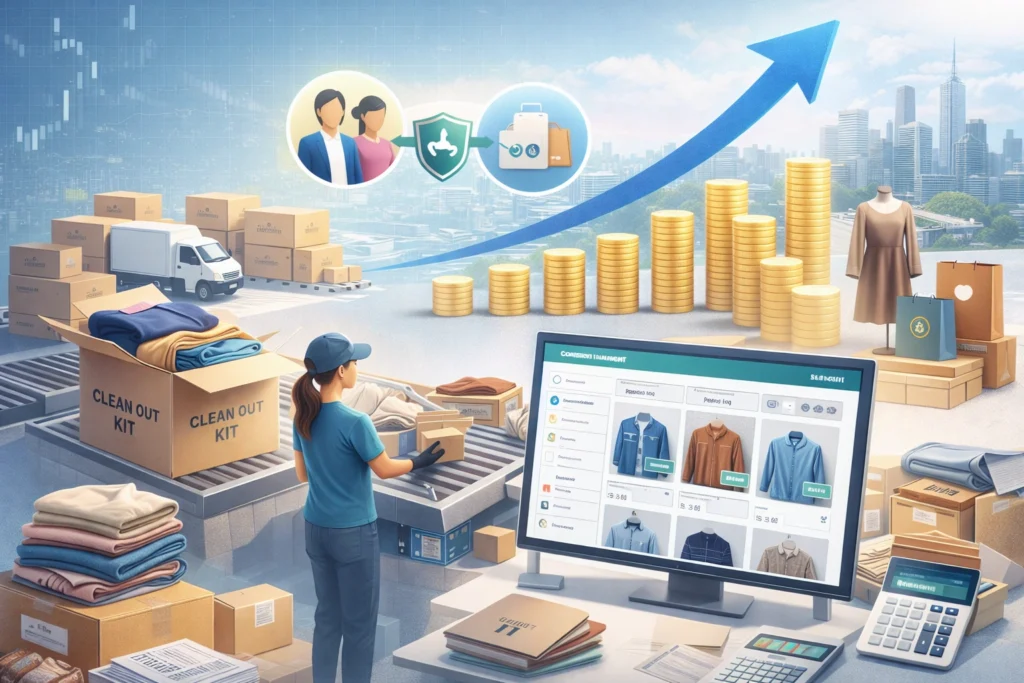Picture this: you’ve just poured months into building a 1mg clone app. You’ve wrangled developers, squashed bugs, survived caffeine-fueled all-nighters—and now your healthtech startup is finally ready to go live. But there’s one tiny snag: no one knows it exists. Oops.
Launching a digital health platform like 1mg isn’t just about tech; it’s a marketing strategy of 1mg marathon with a sprint at the beginning. Whether you’re cloning 1mg to disrupt the pharmacy game or building the next big e-health sensation, marketing can make or break your startup before it even takes its first breath.
Let’s talk about what happens before and after your app hits the Play Store. This blog will walk you through the crucial differences between pre-launch and post-launch marketing, using examples, a touch of sass, and insights from the trenches. Oh, and yes—Miracuves is here to help you launch smarter, not just faster.
Features of 1mg clone
A 1mg clone offers a robust, end-to-end digital healthcare platform designed for modern users seeking convenience, trust, and speed in medical services. The platform enables users to search and order medicines online, with support for uploading prescriptions, checking generic alternatives, and viewing detailed drug information including uses, dosage, side effects, and interactions. It also includes lab test bookings with home sample collection, real-time tracking, and digital report delivery. Integrated online doctor consultations—via chat, voice, or video—allow patients to consult with specialists across categories like general medicine, dermatology, and pediatrics.
The system supports smart search, e-prescriptions, discounted health packages, and reminder notifications for medicine refills or test follow-ups. Users can also explore verified health content, articles, and tips curated by experts. On the backend, the admin panel enables full control over inventory, prescriptions, order flow, lab tie-ups, appointment scheduling, and promotions. Integrated payment gateways, wallet systems, and support for health insurance or subscriptions ensure a seamless and flexible user experience.
Data security, HIPAA or local regulatory compliance, multi-language support, and role-based access for doctors, lab partners, and delivery personnel make it a scalable, compliant, and profitable healthcare solution for new-age digital health businesses.
Learn More: 1mg App Features List: Build a Smart Health App Like This

Pre-launch Marketing: Set the Stage Before the Spotlight
Why Pre-launch Isn’t Optional (No, Really)
Too many startups like Statista wait until launch day to care about users. That’s like throwing a party and sending invites after everyone’s already gone to sleep. You need a buzz before the app drops.
Pre-launch marketing is all about building anticipation, gathering early adopters, and ensuring you don’t debut to the sound of crickets.
Key Pre-launch Tactics:
- Landing Page with Signup Forms: Capture emails early. Tools like Mailchimp or ConvertKit work great. Add an “early access” or “VIP list” hook.
- Teaser Campaigns: Use countdown timers, sneak peeks of your UI, and limited reveals on Instagram, Twitter, and LinkedIn. (Don’t underestimate the power of a good emoji.)
- Beta Testing with Feedback Loops: Invite real users to stress-test your app. Incentivize them with discounts or referral codes.
- Influencer Outreach in Health & Wellness Niche: Micro-influencers = mega trust. Target pharmacists, fitness coaches, or health bloggers.
- PR and Media Kits: Reach out to tech blogs, healthcare sites, or even local news for pre-launch coverage.
Post-launch Marketing: Keep the Momentum Alive
The Real Work Begins AFTER Launch
The app store “go-live” moment feels like the finish line, but it’s actually the starting gun. Post-launch marketing is all about user retention, growth hacking, and revenue scaling. You now have something real—make people care.
Core Post-launch Moves:
- App Store Optimization (ASO): Optimize title, keywords, screenshots, and reviews. This isn’t just SEO—it’s survival.
- Performance-Based Ads (Google UAC, Meta Ads): Track what converts and double down. Health-specific messaging like “Order meds in 30 mins” works like magic.
- In-App Engagement: Push notifications, onboarding nudges, personalized med reminders—keep users coming back.
- Referral Campaigns: Make sharing sexy. “Get ₹100 off for every friend who downloads” isn’t revolutionary—but it works.
- Customer Support as Marketing: A quick reply to a complaint can turn a critic into a brand advocate. Use chatbots smartly, but don’t skip the human touch.
Pre-launch vs Post-launch: A Side-by-Side Breakdown
| Element | Pre-launch Marketing | Post-launch Marketing |
|---|---|---|
| Objective | Build anticipation & waitlist | Drive adoption & retention |
| Audience | Early adopters, media, influencers | Real users, loyal customers |
| Channels | Email, social teasers, PR, landing | Ads, ASO, in-app features, retargeting |
| KPI Focus | Signups, buzz, interest | Installs, engagement, conversions |
| Tools Used | Mailchimp, Typeform, Notion | Firebase, AppsFlyer, Mixpanel |
Real-life Example: Let’s Say You’re Launching “QuickMeds”
Imagine “QuickMeds” is your 1mg clone. During pre-launch, you run a health quiz campaign on Instagram that lands 3,000 signups in two weeks. You test the app with 100 early users and fix a major UX bug. Result? On launch day, you hit 2,000 installs in 48 hours and climb the health app rankings.

Two weeks later, you trigger a referral campaign. Within 10 days, your DAU (Daily Active Users) doubles. That’s the power of smart sequencing: launch with intent, grow with insight.
Build Your Own Health App Like 1mg with Miracuves
Conclusion
Don’t let your launch be an afterthought. Marketing a 1mg clone isn’t just about getting downloads—it’s about building trust, usage, and loyalty. Pre-launch plants the seed, but post-launch nurtures the forest.
Keep an eye on trends like AI health assistants, voice-based prescriptions, and hyperlocal delivery—your next feature set could be your next big win.
At Miracuves, we help innovators launch high-performance app clones that are fast, scalable, and monetization-ready. Ready to turn your idea into reality? Let’s build together.
FAQs
1) What’s the biggest mistake startups make during pre-launch?
They don’t build a waitlist or community. Your launch day should feel like a premiere, not a soft opening.
2) Is post-launch more important than pre-launch?
Both are vital—but post-launch has higher stakes. You’re playing with real users and real metrics.
3) How soon should I start pre-launch marketing?
Start right away — with Miracuves delivering your solution in just 3–6 days with guaranteed delivery, you can begin creating buzz and building traction from day one.
4) What are some free pre-launch tactics?
Email lists, social media content, blogging, and Reddit/Quora engagement work without breaking the bank.
5) How do I get initial users after launch?
Use a combo of referral programs, paid ads with strong CTAs, and app store optimization.
6) Can Miracuves help with marketing too?
Absolutely! While our core is clone app development, we also guide you with growth strategies tailored for your niche.








